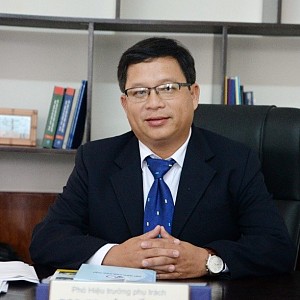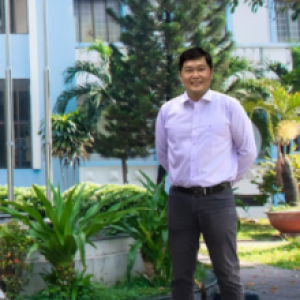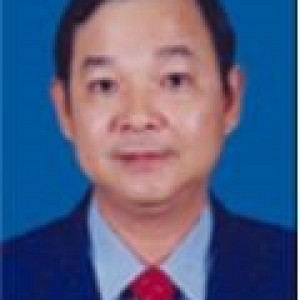Search Papers
20 papers
The callus is a disorganized mass of cells that grow in plants in response to various biotic and abiotic stimuli. Callus plays an important role in cell cultures in vitro, as a starting material for many subsequent studies such as single-cell culture, protoplast culture, micropropagation, etc. In this review, callus as well as the factors affecting callus formation and proliferation (plant growth regulator, mineral medium, carbon source, type of explant, light condition, callus line) are explored to provide a brief overview of callus culture
DISEASE KNOWLEDGE, PERCEIVED SUSCEPTIBILITY AND COMPLIANCE BEHAVIORS ON POST-KIDNEY TRANSPLANT REGIMEN AMONG ADULTS RESIDENTS OF HO CHI MINH CITY, VIETNAM
Pham Minh Son, Joanna S. De Guzman
The study aimed to evaluate disease knowledge, perceived susceptibility and compliance behaviors of post-kidney transplant patients as well as assess relationship between disease knowledge, perceived susceptibility and compliance behaviors. A descriptive cross-sectional study conducted on 153 post-kidney transplant patients from March to June 2024 at Outpatient Department of Cho Ray hospital. The result showed that the majority of respondents have a lack of knowledge regarding medication and lifestyle change post kidney transplantation. While perceived susceptibility of respondents were at a fair level. Majority of respondents has a low level of perception regarding barriers to adherence and susceptibility to transplant rejection, while they have a good level of perception regarding benefits of adherence to treatment with immunosuppressive medication. Compliance behavior of post kidney transplant adults was at a good level. Majority of respondents had good compliance behavior regarding medication, while exercise and psychological adaptation was the lowest level of compliance behavior. There are positive relationships between Compliance behaviors and disease knowledge (r = 0.49, p < 0.001); perceived susceptibility (r = 0.45, p < 0.001) and perceived susceptibility plays a partial mediating role between knowledge and compliance behaviors and the mediating effect accounted for 31% of the total effect of disease knowledge on compliance behavior. The study also indicated that educational level (ꞵ = 0.93, p = 0.020), duration of transplant (ꞵ = 0.20, p = 0.012) are predictive factors of compliance behavior among post – kidney transplant patients. Educational interventions targeting both knowledge and health beliefs, particularly for older individuals, could improve adherence to treatment and overall health outcomes.
Sesuvium portulacastrum was shown to absorb sodium (Na+) and clor (Cl-) from the soil and accumulate it within its tissues. Therefore, it was chosen as a good plant for the phytodesalination of saline soils. The present study aimed to evaluate plant capacity to accumulate cloride ions and the potential to desalinize in saline soil medium of this halophyte. The results show that S. portulacastrum has a high tolerance at salt concentrations from 0.5% - 5% in growth terms of stem height, number of branches level 1, root length, and fresh biomass. Plants absorb a marked Cl- ions content clorideine and accumulate in roots, stems, and leaves. The efficiency of salt removal is 92% in the treatment of NaCl 1%. These results contribute to reducing soil salinity, so it is possible to apply sea buckthorn to treat saline soil environments.
RESEARCH ON COOKING OIL ABSORBENT PADS USING WATER HYACINTH MATERIALS
Nguyen Thi Xuan Hanh, Nguyen Hong Hai Duy, Tran Thi Khanh Hoa
ABSTRACT
Cooking oil is an indispensable ingredient in everyday family cooking. The oil after use is often discharged directly into wastewater systems, leading to risks of environmental pollution, water pollution, clogging of drainage systems... In recent years, water hyacinth plants have been considered weeds, floating on rivers, canals, ponds and lakes, obstructing the circulation of boats and preventing water flow. Water hyacinth plants are often found in large rivers and almost no one cares about their uses, making them truly wasteful.
Realizing the flexibility of water hyacinth when dried, it can be woven into pieces with good absorbent properties, our team has researched using water hyacinth as a material to absorb used cooking oil that is discarded into the environment. school. The research uses the main methods of experimental method and sample analysis method in its research. The result is that a product that absorbs discarded cooking oil scum is formed and is tested for cooking oil contaminated water with results consistent with QCVN 14:2008/BTNMT. The purpose of the research is to find effective products to absorb discarded cooking oil to save costs and contribute to environmental protection. The problem of using naturally available materials to create products that absorb cooking oil scum at the same time solves two current environmental problems. The research is a preliminary result, so there are still many shortcomings. We hope that in the future there will be further research to make the product more and more perfect
IN VITRO REGENERATION OF STRIPE EBONY (DIOSPYROS FRUTESCENS BLUME)
Ngo Vu Nguyen, Nguyen Minh Ty
The Stripe ebony tree (Diospyros frutescens Blume) is considered a species in danger of extinction due to overexploitation. Therefore, there is an urgent need to regenerate and conserve the species for future generation. In this study micropropagation protocol of Diospyros frutescens Blume was developed using nature zygotic embryos. Zygotic embryos isolated from germinated on MS medium containing 0.4mg L-1 Kinetin + 1.0mg L-1 BA. There were (83.11±0.79%) of explants induced shoots after 30 days of culture. The highest number of shoot on 1/2 MS medium supplemented with 2.5mg L-1 BA + 0.6mg L-1 IBA was 5.84±0.035 shoots per explant after 45 days of culture. The percentage of shoot produced roots the highest 85.52±0.48% after 45 days culture on 1/2 MS medium contain 0.8mg L-1 IBA
PHYTOREMEDIATION ECOLOGICAL TECHNOLOGY: A REVIEW ON HEAVY METALS (AS, CD, PB, CU AND ZN) UPTAKE BY AQUATIC PLANTS
Huynh The An
Phytoremediation is an ecofriendly that has shown promising results for the contaminants like heavy metals. Because of its advantages as a cost-effective, efficient, environment- and eco-friendly technology based on the use of metal-accumulating plants. This paper aims to compile some information about heavy metals of arsenic, cadmium, lead, copper and zinc (As, Cd, Pb, Cu and Zn) sources, effects and their treatment. It also reviews deeply about phytoremediation technology, including the heavy metal uptake mechanisms and several research studies associated about heavy metals (As, Cd, Pb, Cu and Zn) and aquatic plants are used to process these heavy metals.
Comparing the potential of three dracaena species to remove lead (pb) from artificial aqueous media
Ho Bich Lien
The study was undertaken to compare the lead accumulation and removal of Dracaena sanderiana, Dracaena reflexa, and Dracaena deremensis on artificial lead solutions to apply plants in lead pollution treatment. The experiment consisted of 6 treatments corresponding to 3 investigated species of Dracaena. Each treatment was grown on 2 types of solution with Pb and without Pb used as control. The results indicated that the growth of D. sanderiana, D. reflexa, and D. deremensis was not affected at Pb concentrations of 100 ppm. All three plant species had the ability to absorb and accumulate Pb. In which D. sanderiana was a typical lead excluder because the lead concentration in roots (1952.14 mg/kg), shoots (221.78 mg/kg), and leaves (166.46 mg/kg) of the plants were the highest among the three plants tested. The most of lead accumulated in the root, and transportation of lead in D. sanderiana, D. reflexa, and D. deremensis from root to shoot was restricted. Besides, the highest % removal of Pb was found at D. sanderiana (93.16%) and the minimum of 66.77% at D. reflexa. D. sanderiana is the best choice among the three Dracaena species used for phytoremediation of lead contaminated wastewater.
Comparing the potential treatment of biogas effluent by two artificial wetland wastewater treatment systems
Hồ Bích Liên
subjects in many countries and the treatment of breeding waste has to be taken as a priority. Nowadays, biogas technology sets up and operates primarily to treat breeding waste. However, this technology formed a considerable amount of wastewater the effluent quality is still poor and the concentration of pollutants is higher than the required national technical regulation (QCVN 40:2021/BTNMT). Thus, the project aimed to find out an appropriate procedure to reduce environmental pollution from breeding wastewater of the biogas system which then can be applied in the constructed wetlands system. Two units of Horizontal Flow Constructed Wetland (HFCW) and Vertical Flow Constructed Wetland (VFCW) were located and set up in two treatments with three replications. Both of these units were planted with Cyperus involucratus. Wastewater was fed into the wetland units at a mean flow rate of 312 ml/day. Major parameters including COD, BOD5, SS, N-NH3; P-PO43- were measured. The results indicated that vertically Flow Constructed Wetlands exhibited a higher treatment efficiency than horizontally Flow Constructed Wetlands with the average removal efficiency for COD, BOD, SS, N-NH3, and P-PO43- were 55.2 %, 75.3 %, 82.3 %, 75.9 %, and 70.1 %, respectively. Generally, the study demonstrated that the constructed wetlands can be used as an option for improving the quality of biogas wastewater.
Heavy metals are the most dangerous substances in the environment, have caused deleterious effect not only to the environment but also to the public’s health. Different studies have demonstrated that plants have a high removal capacity for lead ions from pollution sources. However, these plant species were rather limited. Thus, the project aimed to find out plant species that represent its lead removal ability to reduce environmental pollution. The experiment was carried out factorially as a randomized complete design in hydroponic systems with four treatments (0, 100, 200, and 300 mg/l of Pb) and three replications. The results indicated that the growth of the Dracaena sanderiana plant is well in Pb concentration of 100 mg/l, with less growth while the increasing lead concentration of 200 mg/l and 300 mg/l. The amount of lead in the water of three treatments 100 mg/l, 200 mg/l, and 300 mg/l after 30 days of the experiment decreased by 91.5%, 86.8%, and 86.4%, respectively. It was found that Dracaena sanderiana exhibited high lead treatment efficiency in the water. Moreover, results showed that the accumulation of lead in the roots of Dracaena sanderiana is quite large with treatments of 100 mg/l, 200 mg/l, and 300 mg/l lead concentrations were 5073.8 mg/kg, 5134.0 mg/kg, 7054.0 mg/kg, respectively. In contrast, the ability to lead accumulation in plant leaves and stems is lower. cultivated in hydroponic systems with four treatments and three replications. Four levels of Pb(NO3)2 (0, 100, 200, and 300 ppm) were used. The monitoring indicators include the contents of lead in water, the growth target of Dracaena sanderiana, and the accumulation of lead contents in different organs of Dracaena sanderiana. The results indicated that: the growth of the Dracaena sanderiana plant is well in Pb concentration of 100 ppm, with less growth while the increasing lead concentration of 200 ppm and 300 ppm. The amount of lead in the water of three treatments 100 ppm, 200 ppm, and 300 ppm after 30 days of the experiment decreased by 91.5%, 86.8%, and 86.4%, respectively. It was found that Dracaena sanderiana exhibited high lead treatment efficiency in the water. Moreover, results show that the accumulation of lead in the roots of Dracaena sanderiana is quite large with treatments of 100 ppm, 200 ppm, and 300 ppm lead concentrations were 5073.8 mg/kg, 5134.0 mg/kg, 7054.0 mg/kg, respectively. In contrast, the ability to lead accumulation in plant leaves and stems is much lower.
A review on water mint (Mentha aquatica L.): Phenolic compounds and essential oils
Vi Nguyen Phuong Truong, Nhan Thi Thanh Vo, Tram Thi My Pham
Mentha aquatica L. (water mint) is known as a medicinal plant that has many novel compositions. The phenolic compounds and essential oils in Mentha aquatica L. played an important role in many types of diseases treatments such as flatulence, anorexia, indigestion, ulcerative colitis, etc. However, there are still little data concerning these compounds and their functions. The aim of this study was to review the biological activities, phenolic compounds, and essential oils in Mentha aquatica L.
Naringenin: a potential bioactive compound and pathways of biosynthesis – a review
Nguyen Anh Dung, Nguyen Thanh Thuan
Naringenin is a member of the flavonoid family. This natural compound represents a large proportion of secondary metabolites produced by higher plants and is a rich part of the human diet. Naringenin also has been used in the pharmaceutical and medical fields as an effective drug for anti-oxidative, anti-cancer, anti-obesity, and anti-inflammatory activities. Naringenin is also a typical plant metabolite, that has never been reported to be produced in prokaryotes. Recently, many papers reported that various members of the Streptomyces family, a genus of actinobacteria, had a novel pathway to produce Naringenin
Assessment of sewage sludge management at Thu Dau Mot wastewater treatment enterprise
Nguyễn Thanh Quang
Research and assessment of sludge management in Thu Dau Mot wastewater treatment enterprise. The composition of the sludge depends on the composition of the wastewater, the wastewater treatment process and the sludge treatment process. The most common non-toxic organic compounds include materials of plant and animal origin such as proteins, amino acids, sugars, fats ... compounds containing N, P... Toxic organic compounds include compounds of PHA (Poly-nuclear aromatic hydrocarbons), alkyl phenols, polychlorinated biphenyls (PSBs) organochlorine pesticides, phenols, chloro-benzenes ... Heavy metals such as: Zn, Pb, Cu, Cd, Ni, Cr, Hg, As… (in the range from 1ppm to 100ppm). Some of these compounds can be toxic to humans and animals. Therefore, it is necessary to control the concentration of heavy metals in the sludge before disposal or reuse. Harmful microorganisms such as pathogenic bacteria, viruses and protozoa together with parasitic helminths can increase the potential harm to human, animal and plant health. Inorganic compounds such as silicates, aluminates, calcium and magnesium compounds.
Hazard Identification and Risk Assessment in Wastewater Treatment Plant of Di An City
Ho Tong Tron, Nguyen Hien Than
The wastewater treatment plant is an extremely important infrastructure to ensure the quality of life, water use of human life, and other ways to ensure water quality for the natural environment. In the operation of it, there are always potential hazards affecting the health of the workers working in the factory. The study was performed using the Semi-quantitative risk assessment method to calculate the values of operational risks in the water treatment plant (WWP). The results of the study obtained 18 high potential hazards that may lead to the present in the water treatment process. The hazards were the leakage of deodorizing towers and the generation of toxic emissions of dead microorganisms that have the highest value with a risk scale of 20 points- frequent impacts on employees. The study has also identified the dangers present in WWP and this will be the premise for mitigating solutions for problems occurring at its.
Bioactivities of extracts and phytochemicals of Indigofera aspalathoides Vahl ex DC.
Authinarayanan Rajesh, Saravanan Vievekanandarajah Sathasivampillai, Pholtan Rajeev Sebastian Rajamanoharan
Indigofera aspalathoides Vahl ex DC. belongs to the Fabaceae family. I. aspalathoides is applied to heal tumors, inflammations, diabetes, leprosy, and kidney illnesses in traditional medicines. Compounds including kaempferol, kaempferol 5-O-β-D-glucopyranoside, 5,4'-dihydroxy 6,8-dimethoxy 7-O-rhamnosyl flavone, indigocarpan, and mucronulatol have isolated from this plant species. Hitherto, there is no comprehensive review available regarding the reported bioactivities of I. aspalathoides. Thus, this article goals to analyze, summarize and document the published bioactivities-related publications. Electronic databases the Web of Science, Scopus, ScienceDirect, and PubMed used to find relevant publications from 1900 to December 2020. Thus far, only in vivo and in vitro scientific evidence levels of bioactivities are available. I. aspalathoides holds such as anti-inflammatory, anticancer, antihepatotoxic, anti-arthritic, immunomodulatory, and antidiabetic properties. Overall, immunomodulatory, anti-inflammatory, and anticancer compounds have been isolated from this plant species Therefore, additional bioactivity and phytochemical-related researches would need to perform to generate more scientific evidence for other applications. This work will be useful for further bioactivity and phytochemical studies using this plant species.
Diversity of Orchidaceae from South East Viet Nam
Nguyen Minh Ty, Nguyen Vinh Hien
A study on the diversity of Orchids from Southern East Viet Nam was carried out in 2019 and 2020 and identified 173 species, 50 genera, accounting for 1.28% of the total number of orchid species available in Viet Nam (897 species). Among them, all species were used as ornamental plants; 13 species were used for medicinal herbs; and 5 species were listed for conservation in Vietnam Red Data Book, Part II, Plants (2007). The life forms of Orchids were divided into groups including (1) epiphytes with 144 species, (2) terrestrials with 26 species, (3) saprophytes with 1 species, (4) lithophytes with 2 species. There are 60 species were added to the Southern East Viet Nam.
Keywords: Diversity of orchidaceae, Southern East Vietnam
Species diversity and distribution of wild bees (Hymenoptera: Apoidea) in Binh Chanh District, Ho Chi Minh City
Le Van Tho, Dang Van Son
As the most significant pollinators of wild plants, bees play an important role in sustaining the natural ecosystems. In this study, we conducted surveys of bee fauna of three different habitat types during dry and rainy seasons of 2020 in Binh Chanh District, Ho Chi Minh City. A total of 169 individuals from 13 bee species belonging to six genera were collected. Of these, eight species are newly recorded from Ho Chi Minh City: Amegilla calceifera, A. himalajensis, A. zonata, Ceratina nigrolateralis, C. smaragdula, Xylocopa aestuan, X. latipes, Tetragonula fuscobalteata. The species composition of bees was more diverse in forest habitat than rural garden and canalbank habitats. The richness and abundance of bees were significantly higher in the dry season than the rainy season. Apis florea was abundant in forest and rural garden habitats while Ceratina smaragdula occurred plentifully in the canalbank habitat. Eight bee species (Apis cerana, A. dorsata, A. florea, Thyreus himalayensis, Xylocopa latipes, X. aestuans, Ceratina smaragdula, and C. nigrolateralis) widely distributed throughout all three habitats. By contrast, four bee species (Amegilla calceifera, A. himalajensis, Apis mellifera, and Tetragonula fuscobalteata) exclusively appeared in the forest habitat.
Result of study on the diversity of orchids in Southern East Viet Nam in 2019 and 2020 have identified 173 orchids species belong to 50 diffrent genus, accounting for 14.41% of the total number of orchid species available in Viet Nam (1.200 species). Among them, all species were used as ornamental plants; 13 species were used for medicinal herbs; and 5 species were listed for conservation in Vietnam Red Data Book, Part II, Plants (2007). The life forms of orchids were divided into groups including: (1) epiphytes with 144 species, (2) terrestrials with 26 species, (3) saprophytes with 1 species, (4) lithophytes with 2 species. Added 60 species to forest orchid flora of Southern East Viet Nam.
Assessment of the current status of waste sludge treatment of the industrial parks in Binh Duong Province
Trương Quốc Minh, Nguyễn Hiền Thân
Study on sampling sludge from 04 industrial parks in Binh Duong province such as My Phuoc, Dong An, Viet Huong 1, Song Than 2 to analyze the pollution criteria to assess the pollution possibility of industrial waste sludge. The research results show that: at present, the total volume of sludge generated today in the industrial park fluctuates about 4,450 – 6,255 kg/day, equivalent to dry sludge volume is 1,035.725 – 1,532.11 kg/day. The estimated volume of dry sludge generated from industrial parks in the future from 2019 to 2020 ranges from 30,023 to 31,396 kg/day. Most sludge from 04 wastewater treatment plants hadn’t heavy metals (Hg, Pb, Cu, Ni, Cr, Zn, Cd), especially Dong An Industrial park Treatment plant had Zn, value 49.7 – 49.9 mg/l. The sludge from the wastewater treatment plants of 04 industrial parks had amount of helminth eggs that exceeds the USEPA's regulations on pathogens (type A sludge).
Environmental Risk Assessment of Organic Pollution on Wastewater on Industrial Parks in Bien Hoa City
Tran Cong Hau, Nguyen Hien Than
Bien Hoa City is an urban area of Dong Nai province located in the Southern key economic region. Currently, Bien Hoa City has 6 industrial parks in operation with large daily wastewater flow, causing environmental risks, especially from organic pollutants. The study applied the Nemerow risk index and the geographic information systems (GIS). The results showed that the industrial parks were mainly organic pollution levels including N-total, P-total, and Ammonium. The level of environmental risk from organic pollution was recorded in range of medium to very high levels, the ranked in descending order: Agtex Long Binh Industrial Park (P = 24)> Amata Industrial Park (P = 16)> Bien Hoa 2 Industrial Park ( P = 10),> Tam Phuoc Industrial Park (P = 5)> Loteco Industrial Park (P = 3). The results of the study provided good information for the management and improvement of wastewater quality in the industrial wastewater treatment plants of the industrial parks in Bien Hoa City.
Isolating some fungi strains from diease roots of Dipterocarpus dyeri planted at the nursery in Dong Nai province
Tran Ngoc Hung
Dipterocarpus dyeri is a typical plant of tropical evergreen moist forest at Southeast Vietnam. These plants have been planted popularly at parks and urban streets for the shade and it has been commonly materials for timber industry. Multiplication of Dipterocarpus dyeri at nurseries could face to some diseases, such as the withered disease cause serial death. Our study isolated three disease fungi strains from the root areas of the diseased Dipterocarpus dyeri planted Ma Da nursery, Dong Nai province. Result of 28s rDNA sequencing showed these fungi belong to Ophiostoma eucalypticagena, Aspergillus nidulans and Collectotrichum gloeosporioides. This result is base for conducting the following studies to control the withered disease on Dipterocarpus dyeri at the nursery.
Publication Information
Publisher
Thu Dau Mot University, Viet Nam
Editor-in-Chief

Assoc. Prof. Nguyen Van Hiep
Thu Dau Mot University
Thu Dau Mot University
Editorial Board

Assoc. Prof. Le Tuan Anh
Thu Dau Mot University
Thu Dau Mot University

PhD. Nguyen Quoc Cuong
Thu Dau Mot University
Thu Dau Mot University

PhD. Doan Ngoc Xuan
Thu Dau Mot University
Thu Dau Mot University

PhD. Nguyen Khoa Truong An
Thu Dau Mot University
Thu Dau Mot University

Assoc. Prof. Nguyen Thanh Binh
Thu Dau Mot University
Thu Dau Mot University

PhD. Le Thi Thuy Dung
Thu Dau Mot University
Thu Dau Mot University

PhD. Ngo Hong Diep
Thu Dau Mot University
Thu Dau Mot University

PhD. Nguyen Duc Dat Duc
Ho Chi Minh City University of Industry and Trade
Ho Chi Minh City University of Industry and Trade

Assoc. Prof. Nguyen Van Duc
Animal Husbandry Association of Vietnam
Animal Husbandry Association of Vietnam

PhD. Nguyen Thi Nhat Hang
Department of Education and Training of Binh Duong Province
Department of Education and Training of Binh Duong Province

PhD. Nguyen Thi Cam Le
Vietnam Aviation Academy
Vietnam Aviation Academy

PhD. Trần Hạnh Minh Phương
Thu Dau Mot University
Thu Dau Mot University

M.A. Pham Van Thinh
Thu Dau Mot University
Thu Dau Mot University

PhD. Nguyen Thi Lien Thuong
Thu Dau Mot University
Thu Dau Mot University

Prof. Le Quang Tri
Can Tho University
Can Tho University

Prof. Banh Quoc Tuan
Thu Dau Mot University
Thu Dau Mot University

